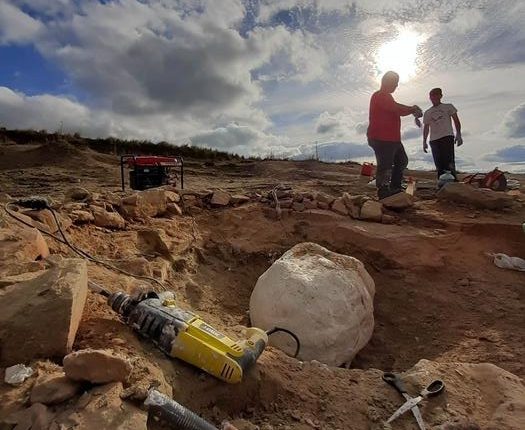RESEARCHERS have uncovered 265-million-year-old dinosaur fossils in South America.
The findings were shared in a new study published in the Zoological Journal of the Linnean Society.
An international team of researchers is credited with the discovery, which was made in a rural area of São Gabriel, Southern Brazil.
The 265-million-year-old preserved fossils belonged to a species known as Pampaphoneus biccai.
The stunning fossil includes a complete skull, some ribs, and arm bones.
“The fossil was found in middle Permian rocks, in an area where bones are not so common, but always hold pleasant surprises,” said lead author Mateus A. Costa Santos, a graduate student in the Paleontology Laboratory at the Federal University of Pampa (UNIPAMPA).
“Finding a new Pampaphoneus skull after so long was extremely important for increasing our knowledge about the animal, which was previously difficult to differentiate from its Russian relatives.”
Pampaphoneus is an extinct genus of carnivorous dinocephalian therapsid, which belonged to the family Anteosauridae.
The species lived until the dinosaurs went extinct around 65 million years ago, at the end of the Cretaceous Period.
It’s unusual for the species’ fossils to be uncovered in Brazil as they’ve mostly been spotted throughout Russia and South Africa.
Most read in News Tech
Because of the COVID-19 pandemic, it took three years for the fossils to be cleaned and thoroughly studied after being discovered.
“This animal was a gnarly-looking beast, and it must have evoked sheer dread in anything that crossed its path,” said Co-author Professor Stephanie E. Pierce of Harvard University.
“Its discovery is key to providing a glimpse into the community structure of terrestrial ecosystems just prior to the biggest mass extinction of all time,” Pierce added.
“A spectacular find that demonstrates the global importance of Brazil’s fossil record.”
These new fossils represent only the second time a Pampaphoneus skull has ever been discovered in South America.
The specimen is also larger than the first one that was uncovered and could provide new insight into its morphology, Eureka Alert reported.
“Pampaphoneus played the same ecological role as modern big cats,” said senior author and head of lab Professor Felipe Pinheiro, UNIPAMPA.
“It was the largest terrestrial predator we know of from the Permian in South America,” he added.
“The animal had large, sharp canine teeth adapted for capturing prey. Its dentition and cranial architecture suggest that its bite was strong enough to chew bones, much like modern-day hyenas.”
This post first appeared on Thesun.co.uk











